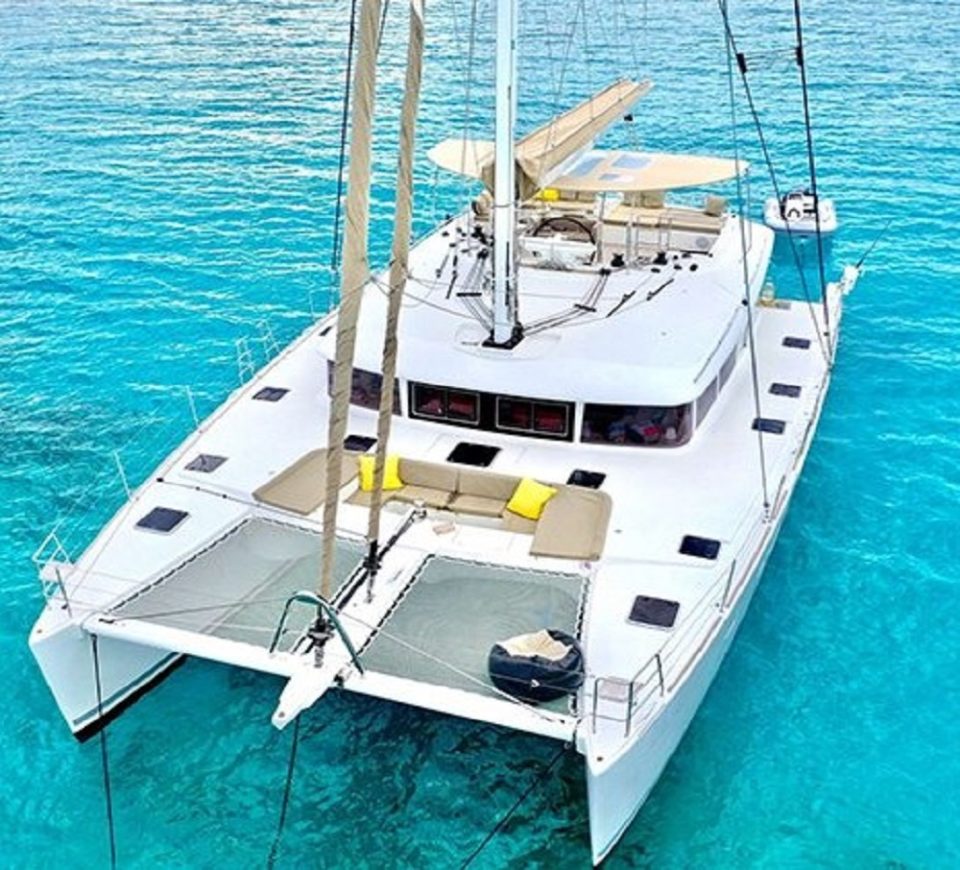
An essential component of yacht ownership and operation is yacht maintenance. That lovely yacht at the dock represents a significant investment, and like any asset, it needs to be safeguarded and maintained to ensure reliable operation and maintain value.
Maintaining your boat is essential for everyone’s safety when using it as well as for your peace of mind. The scope and complexity of the systems on board the boat might grow as it gets bigger, making maintenance more difficult. Here is a comprehensive overview of the best maintenance equipment and procedures for yachts. Learn how to ensure your yacht receives the appropriate maintenance at the appropriate time.
Why do yachts need maintenance?
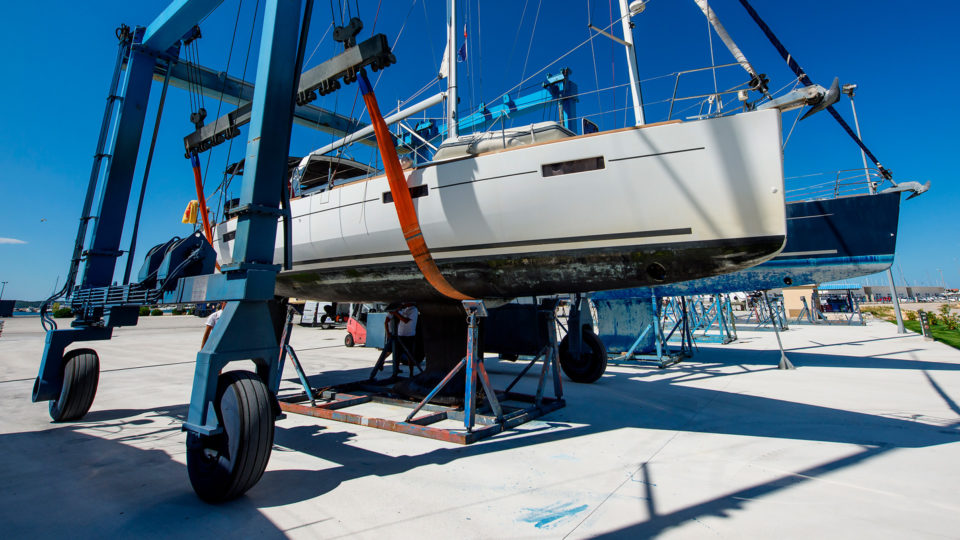
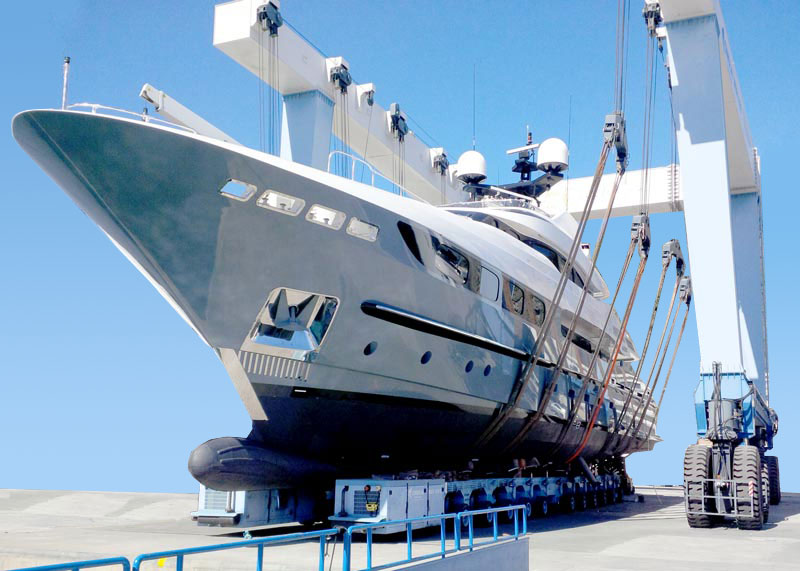
Saltwater is corrosive on boats’ hulls and equipment.
After each run, a few quick maintenance actions can be a healthy habit because salt water can cause corrosion. Your boat’s gel coat, rubber fittings, small screws, and metal fixtures are all susceptible to harm from saltwater. Salt speeds up wear and tear on almost all surfaces, but the additional rust it produces and the harm it can do to the motor are particularly troublesome. It’s crucial to shield every surface from corrosive salt damage as part of your boat’s routine maintenance. Perform a quick visual check of the engine compartment to look for leaks after each run. Make sure to hose out the boat to remove any salt residue.
Some parts need lubrication or adjustments.
The slick surface of your boat helps repel saltwater, barnacles, and other organisms that can eat away at the hull. Maintaining the gelcoat isn’t just for aesthetic sake. To help prevent corrosion of the engine components, you can also spray a marine-safe silicone on the powerhead. Ensure that you routinely oil any metal moving parts using marine grease. Routine grease coating updates can help guard against corrosion on delicate metal components.
Equipment need to be replaced once in a while
Machines and their parts may need to be replaced after a certain period. Continuous wear and tear and exposure to sea water necessitate regular inspection of parts to identify any faults. Also, identifying the faulty points will help decide which parts need immediate replacement and which need maintenance.
What parts of a yacht need regular maintenance?
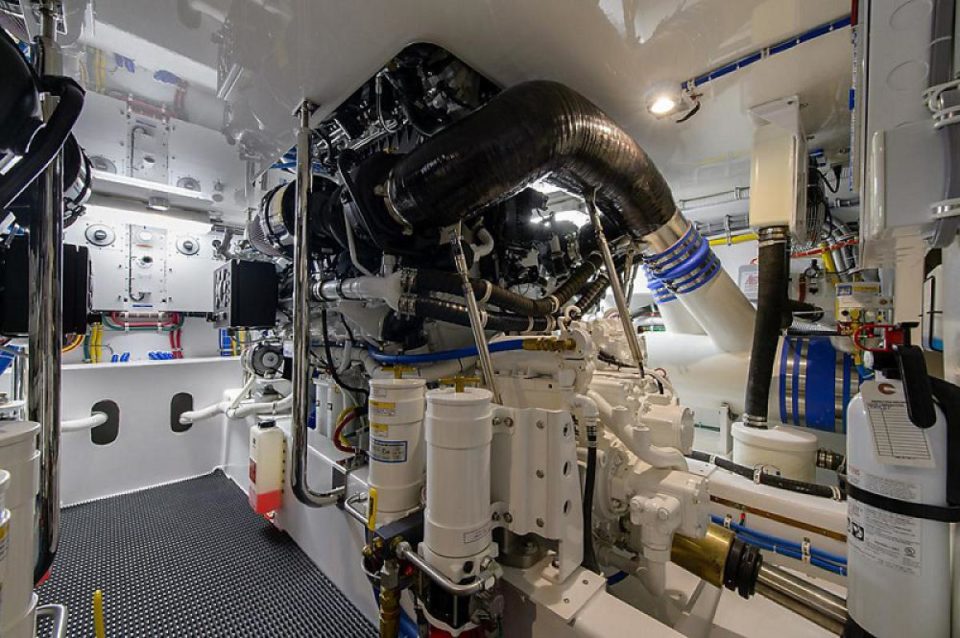


The boat’s hull (bottom and sides) requires a lot of attention.
You might not detect damage to your yacht right immediately unless it has been a collision or something similar. To ensure that it continues to be in great shape, we advise that you perform a few tasks at least once a month (but ideally more frequently). Examine your hull’s sides and bottom for damage, and then make plans to get it repaired as soon as possible.
The yacht engines need to be checked regularly.
The engine, in particular, needs great care and attention. The engine should be examined daily and monthly, unlike other items that can be put off. Visual examination of the engine and engine area. Verify the belt tension and oil level in the engine. Check the alignment, level, and visual appearance of the pulleys. Verify the water pump and alternator belts are securely fastened. Check the levels of the antifreeze and coolant.
Oil and filters should be replaced every month. Check the coolant and antifreeze levels and top them out as necessary. Check the heat exchanger anodes and replace them as necessary.
All electrical systems should be controlled frequently.
Inspect that every wire is securely fastened and organized. Make sure the wire casings are intact and fix them if necessary. Examine the safety and quality of the wire connections. Allow as little moisture as possible around bare wires. Check the conditions of the breakers and fuses. Test the condition of the batteries to ensure they are functional. Check to see if the batteries are dry and clean. The test batteries must be operating at their best. Refill the distilled water as per the need.
Ventilation, Air conditioning, and Plumbing of a boat might need a bit of work.
A frequent assessment of the boat’s plumbing and HVAC system is a requirement in a boat maintenance schedule if the boat already has air conditioning installed. The HVAC systems on the boat may be having unnoticed issues, so review this carefully.
What yacht maintenance is needed each month?


Washing the exterior of your yacht (including engines): every 2 weeks
If you want your boat to always be in top condition, cleaning it every two weeks is preferable to cleaning it once a month. You should clean and wash all visible components of the yacht’s exterior. Remove any smudges, dust, or bird poop. You can also take off canvas covers and clean all upholstery. Clear the wood and metal work surfaces.
Clean the bottom of your yacht: once a month
You should routinely remove the barnacles from the boat’s bottom. A yacht’s long-term maintenance and effective operation depend on having a clean, smooth hull. This typically entails a diver scrubbing the hull from the water line and below to ensure that the boat is free of barnacles, various types of algae, and marine life. A higher current area can result in more frequent growth and the need for more regular cleaning, so keep that in mind as well.
Electrical systems check: once a month.
A good sailing experience depends on many of your yacht’s systems operating properly. The systems used frequently include air conditioning, pumps, exhaust, air intake, batteries, coolant levels, fuel, and lubrication.
Air conditioning cleaning: between once a month and every 6 months
Air conditioning systems of boats require routine maintenance in hot areas. Every six months, perform an acid flush on a yacht’s air conditioning lines to guarantee appropriate cleaning and the removal of any debris lodged there.
Waxing the boat: every 3 months
For best effectiveness, the boat’s exterior should be waxed every six months, from the waterline to the rubrail. Waxing frequency may rise if the hull is colored.
What yacht maintenance is needed yearly?

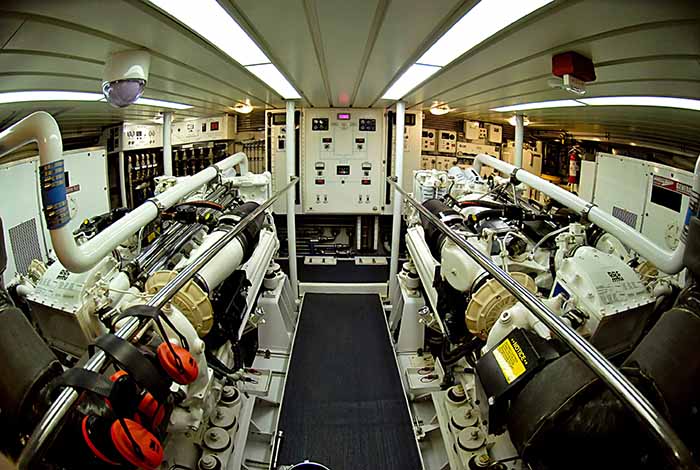
Engine, drivetrain, and generator service: once a year
You should service your yacht’s engine and its other crucial components, like the drivetrain, once every year. Although hauling out is not necessary to check the bottom and running gear, it can be a beneficial practice. The primary engines, transmission belts, and generators will receive necessary maintenance as part of this annual service, which is dissimilar to when automobile owners bring their vehicles in for routine maintenance. Depending on your vessel, the yearly maintenance price, including engine care, will vary greatly. With larger yachts, the costs rise.
Repaint the yacht’s hull: every 2 years
It’s best to take out the boat once a year to inspect the bottom of the hull and, if necessary, repaint it, even though many people believe that every two years is adequate. Consider performing this along with yearly maintenance. The paint layers on your vessel’s bottom could erode as you remove barnacles from the bottom and clean up.
How much does it cost to maintain your yacht?
According to the conventional opinion, yacht owners should anticipate spending 10% of the purchase price annually on upkeep. Undoubtedly included in this 10% estimate is yacht upkeep. However, this generalization can change based on the product you choose. The 10% estimate seems probably exaggerated if you buy a new yacht due to the higher purchase price. The fact that fewer things will break on a newer boat and the fact that the new yacht warranty covers many of these things.
If you buy a used yacht for a lower price, the cost of upkeep and repairs will probably be higher. Ask about the anticipated maintenance costs while seeking information about a particular yacht.
What types of yachts are the ones with the lowest maintenance?



Newer yachts require less maintenance than older ones
It does not involve any cost if a piece of equipment fails because warranties protect a new boat and its equipment. Additionally, every component is fresh and in excellent condition. This covers everything, including the hull, equipment, waxing, and engines. The beds, bilges, and other furnishings are clean and in excellent condition.
Sailing boats need less maintenance than motor yachts.
Additionally, motor yacht engines are expensive. You should anticipate paying a significant amount of money if the engine on your yacht needs to be replaced or repaired for any reason. On the other hand, you fit sailing boats with trolling motors. Most sailors, however, make an effort to use their engines as little as possible and instead rely completely on the wind and tides. Thus, this saves a lot on fuel and maintenance because the engine isn’t big.
Read also: The 5 best sailing boats under 60 feet
Monohulls are low maintenance compared to catamarans.
Based on age, size, and hull construction material, maintenance costs differ amongst vessels. Catamaran maintenance, however, often costs a little more than monohull maintenance for typical vessels of the same overall length. This is a result of the higher strength standards and more intricate engineering. Because catamarans require structural support between the hulls, there is an additional system to maintain.
Read also: Top 6 Motoryachts Around 80 Feet
What types of boats to avoid if you want low maintenance?
Wooden boats are probably the ones that need the most maintenance
The wooden boats deteriorate far more quickly in water than on land over extended periods. This is so because wood easily deteriorates by fungus spores, which reproduce and thrive in water in large quantities. As a result, maintaining and caring for wooden boats is quite labor-intensive.
Superyachts need maintenance proportional to their size
Superyachts, like their purchase price, also demand a high maintenance cost. Furthermore, the maintenance and maintenance cost depends on their size and features.
How to avoid maintenance headaches when owning a yacht?
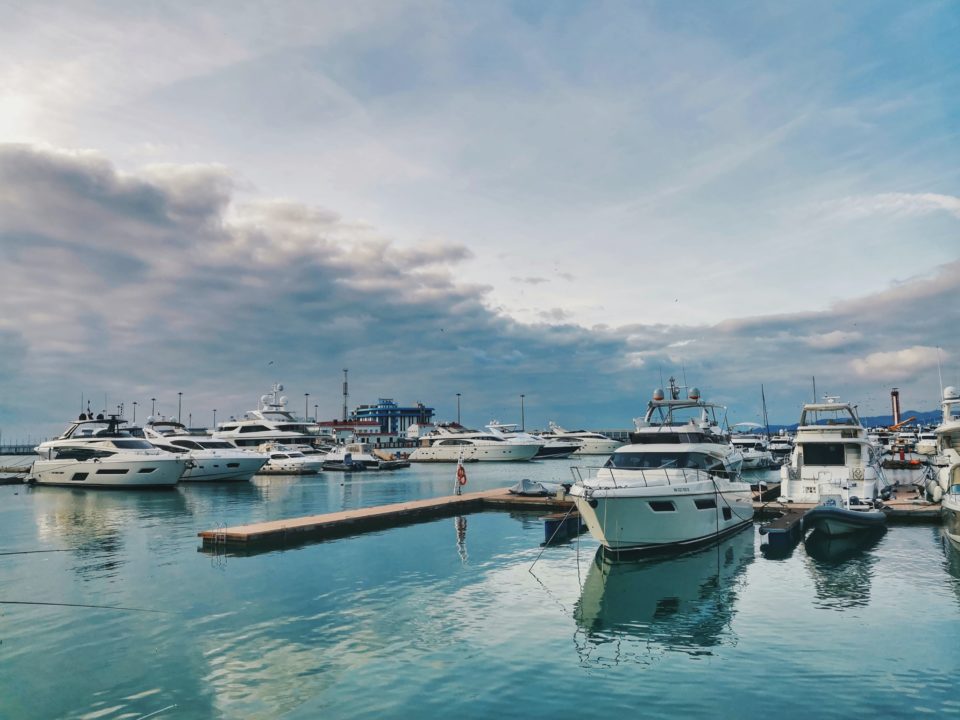
Pick a boat that fits the time and budget you are willing to spend on maintenance.
There are several things to consider when considering boat ownership, such as estimating operating and maintenance expenditures. It has numerous systems, including mechanical, electrical, water, heat, and maybe air conditioning, all of which require regular maintenance to ensure proper operation. Therefore, choosing a boat that suits not only your goals and budget but also your time and financial resources for maintenance is crucial.
Bring your yacht to professionals regularly: the best way to see (and fix) problems early on.
Trusting reputable boat maintenance service providers is perhaps the greatest approach to assure frequent and excellent maintenance of your boat. They are not just proficient in boat maintenance, but they will also give the best suggestion depending on the kind of upkeep required. Indeed, they offer both corrective and preventive maintenance to avoid any kind of heavy expenditures. Furthermore, they are experts in identifying all the hidden damages as well.
Leave all the management (and maintenance) to a yacht broker: the hassle-free option.
As you complete the boat-buying process, having a broker by your side has many benefits. They provide pro-active assistance not only with boat management requirements but also with maintenance needs. Brokers offer a wealth of expertise and product knowledge regarding boats. While some brokers only work with a select few yacht manufacturers, others have a broad range of expertise and can advise customers on the most effective maintenance regimen. This makes it easier to maintain the boat in top condition. In fact, this makes it even more possible for the boat owner to enjoy their boat to the utmost without having to worry about upkeep.
Conclusion
Frequent preventative maintenance is essential for your boat to last a long time. It not only keeps your boat safe, but it can also improve its overall performance, fuel economy, and emissions. You may undoubtedly perform maintenance on your own, but there are a lot of details to keep in mind. So, it is best to trust a professional service provider.
Read also: Can You Live On A Yacht Full-Time? Our Advices


